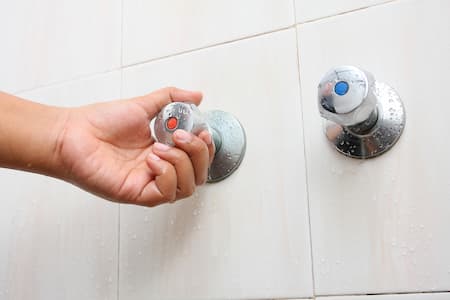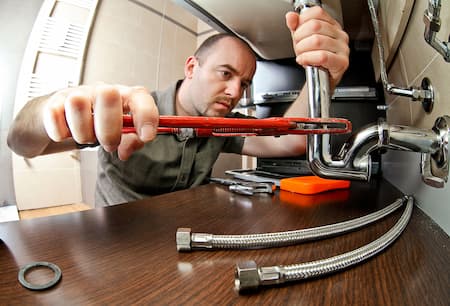Do Plumbers Deal With Sewers?
Introduction
Homeownership comes with a myriad of responsibilities, particularly when it comes to maintaining the infrastructure that keeps your home running smoothly. One of the most critical components of home maintenance is plumbing, especially sewer lines. Plumbers and Sewer Lines: Understanding Their Role in Maintaining Your Home's Plumbing is essential for anyone who wishes to preserve the integrity and functionality of their property. In this article, we will delve into the intricate relationship between plumbers and sewer lines, exploring their roles, responsibilities, and how they contribute to maintaining a healthy home environment.
The Importance of Plumbers in Home Maintenance
What Do Plumbers Do?
Plumbers are skilled tradespeople responsible for installing, repairing, and maintaining systems that transport water, gas, and waste in homes and commercial buildings. They ensure that pipes are functioning correctly, preventing leaks and clogs while also ensuring that wastewater is disposed of efficiently.
Why Are Plumbers Essential?
Without plumbers' expertise, our homes would face significant issues such as:
- Water Damage: Leaks can lead to severe damage if not addressed promptly.
- Sanitation Problems: Issues with sewer lines can create unsanitary conditions.
- Increased Costs: Delaying repairs can result in more extensive damage and higher repair costs.
Types of Plumbing Services
Plumbing encompasses a wide range of services including:
- Installation of sinks, toilets, and bathtubs
- Water heater installation and repair
- Drain cleaning
- Pipe replacement
- Sewer line inspections
Each service plays a crucial role in keeping your plumbing system functional.
Understanding Sewer Lines
What Are Sewer Lines?
Sewer lines are underground pipes designed to carry wastewater away from your home to treatment facilities or septic systems. They play an essential role in maintaining hygiene by disposing of waste properly.
Common Issues with Sewer Lines
Sewer line problems can lead to significant disruptions. Some common issues include:
Signs You Need Sewer Line Repairs
Recognizing the signs early on can save you from costly repairs later:
- Unpleasant odors near drains
- Slow drainage in multiple fixtures
- Frequent backups or overflows
- Wet spots in your yard
How Do Plumbers Handle Sewer Line Repairs?
Inspection Techniques Used by Plumbers
Before any repairs begin, plumbers typically conduct a thorough inspection using methods like:
Repair Methods for Damaged Sewer Lines
Depending on the issue found during inspection, various methods may be employed:
1. Traditional Dig-and-Replacement
This involves digging up the damaged section of pipe and replacing it entirely. It’s effective but can be disruptive.

2. Trenchless Technology
Hop over to this websiteThis modern approach allows for repairs without large-scale digging by using existing access points.
3. Pipe Lining
A liner is inserted into the damaged pipe which hardens to form a new pipe within the old one.
The Cost of Sewer Line Repairs
Factors Affecting Repair Costs
Costs can vary widely based on several factors:
Here’s an estimated breakdown:
| Repair Method | Average Cost Range | |-----------------------|------------------------| | Traditional Replacement | $50 - $250 per foot | | Trenchless Technology | $60 - $200 per foot | | Pipe Lining | $80 - $300 per foot |
Budgeting for Sewer Line Repairs
It’s wise to set aside funds for unexpected plumbing issues since they often arise at inconvenient times.
Preventative Measures for Your Sewer Lines
Regular Maintenance Checks
Scheduling regular inspections with a qualified plumber is crucial for early detection of potential problems.

Proper Disposal Practices
Educating family members about what should not go down drains (e.g., grease, food scraps) helps prevent clogs.
Tree Care Around Sewers
Planting trees at a safe distance from sewer lines reduces the risk of root intrusion significantly.
Choosing the Right Plumber for Your Needs
What Qualifications Should You Look For?
A qualified plumber should have appropriate licenses, insurance coverage, and experience specific to sewer line repairs.
Ask About Experience with Sewer Line Repairs
When interviewing potential plumbers, inquire about their experience specifically related to sewer line issues; this expertise will be invaluable during repairs.
FAQs About Plumbing and Sewer Lines
1. What causes sewer line backups?
Answer: Backups are typically caused by clogs from debris buildup or tree roots intruding into pipes that disrupt normal flow.
2. How often should I have my sewer lines inspected?
Answer: It’s advisable to inspect your sewer lines every two years or sooner if you notice any warning signs like slow drains or foul odors.
3. Can I perform DIY fixes on my sewer line?
Answer: While minor issues like clogs might be manageable at home using drain cleaners or plungers, serious problems should always be handled by professionals due to health risks associated with sewage exposure.
4. What is trenchless technology?
Answer: Trenchless technology allows plumbers to fix or replace damaged pipes without extensive excavation work; it’s efficient and minimizes disruption around your property.
5. How do I know if my plumbing system has leaks?
Answer: Signs may include unusually high water bills, damp spots on walls/floors/celings, or musty smells indicating mold growth nearby where leaks might exist.
6.Will homeowners insurance cover sewer line repairs?
Answer: Coverage varies by policy; many standard policies do not cover damage caused by neglect but some offer add-ons specifically covering plumbing emergencies including those involving sewers so it’s vital review yours thoroughly!
Conclusion
Maintaining your home's plumbing system—especially its sewer lines—is no small feat but understanding key aspects makes all difference! From recognizing signs needing attention through choosing right professionals tackle repairs effectively—being proactive ultimately saves time hassle money long term while ensuring safety comfort family members’ lives daily! Remember: regular inspections combined good practices reduce likelihood costly emergencies down road so don’t wait until disaster strikes get started today!
By grasping these essentials regarding Plumbers and Sewer Lines: Understanding Their Role in Maintaining Your Home's Plumbing, you're better equipped navigate responsibilities associated owning property effectively protect investment future generations enjoy living spaces worry-free!